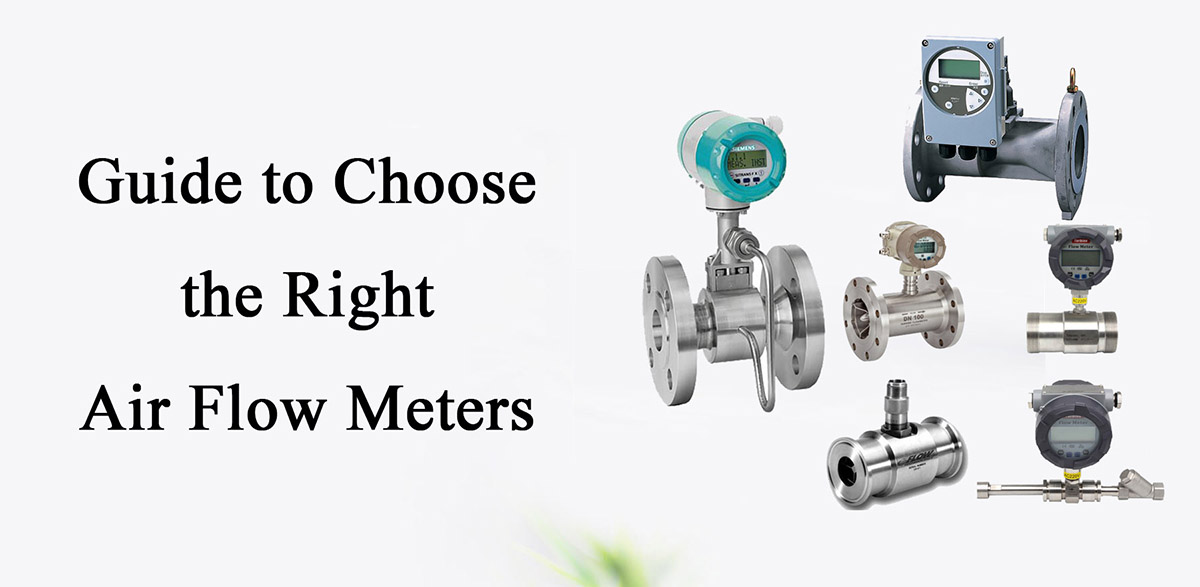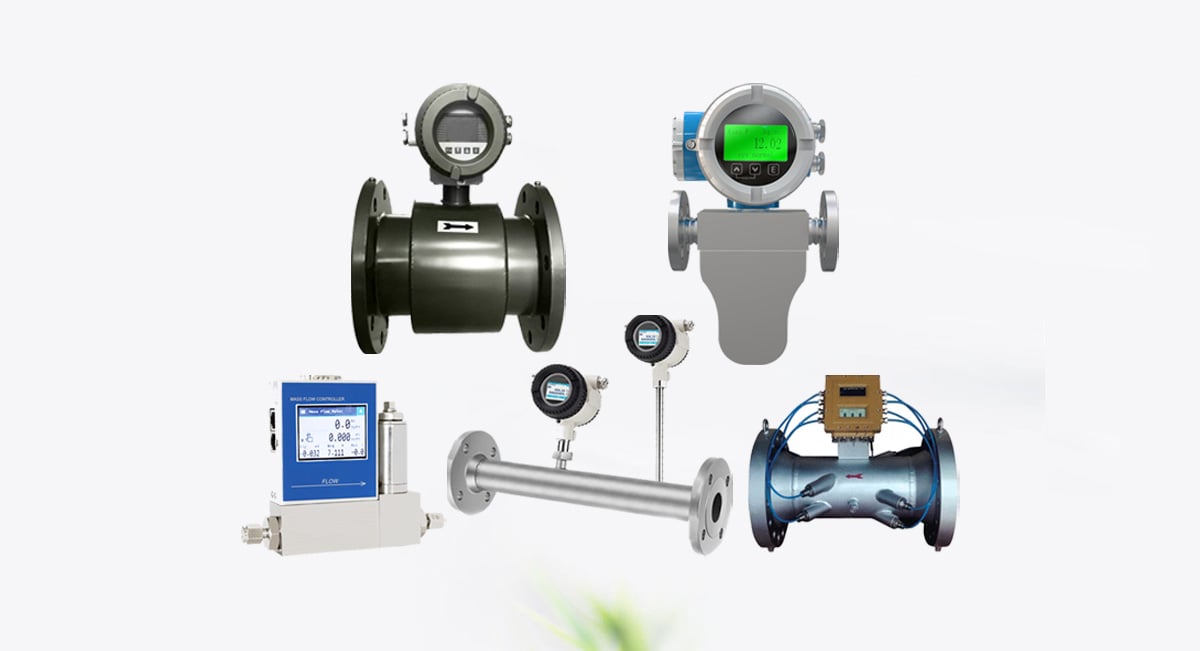Accurate measurement of air flow is crucial across various applications, from HVAC systems to industrial processes. With a variety of air flow meters available, each designed for specific conditions and requirements, selecting the right one can be challenging. This guide will help you navigate the complexities of air flow meters, offering insights into how to choose the best one for your needs, recommending specific types, and discussing their pros and cons.
Table of Contents
Understanding Air Flow Meters
Air flow meters are devices that measure the flow rate of air within a system. These measurements can be critical for energy efficiency, system performance, and process control. The two primary characteristics that air flow meters typically measure are:
- Velocity: The speed at which air moves through a system.
- Volumetric Flow Rate: The volume of air moving through a system over time.
Different air flow meters have unique mechanisms to measure these characteristics, and choosing the right one depends on your application’s requirements.
Factors to Consider When Choosing Air Flow Meters
When selecting an air flow meter, several key factors should be evaluated to ensure you choose the best device for your application:
Application Type
Different applications may require different types of air flow meters. For instance, industrial processes may necessitate robust meters that can handle high pressures, while HVAC systems might prioritize accuracy at lower flow rates.
Flow Range
Understanding the expected flow range is essential. Some meters perform well at low flow rates, while others are suited for high-volume applications. Choosing a meter that can accurately measure within your system’s flow range is critical for reliable performance.
Measurement Method
Different types of air flow meters use various methods to measure flow, such as differential pressure, thermal dispersion, or positive displacement. The choice of method can affect accuracy, installation requirements, and maintenance.
Installation Environment
Consider the physical installation environment. Some flow meters are sensitive to temperature, pressure, or installation orientation. Ensure that the chosen meter can be integrated into your existing setup without significant modifications.
Accuracy and Calibration
Accuracy is crucial, especially in applications involving energy monitoring, emissions control, or billing. Evaluate the accuracy specifications of the flow meter and consider how often calibration will be necessary.
Maintenance Requirements
Different flow meters have varying maintenance needs. Some require regular servicing, while others are designed for minimal upkeep. Understanding the maintenance requirements can help you avoid unexpected downtime.
Budget
While high-precision flow meters offer better performance, they often come at a higher price. It’s essential to weigh the cost against the benefits to determine the best fit for your budget.
Recommended Types of Air Flow Meters
Based on the factors mentioned above, here are some of the most recommended types of air flow meters, along with their pros, cons, and reasons for their suitability in different applications.
| Air Flow Meter Types | Best for | Pro. | Cons. |
| Thermal Mass Air Flow Meters | Low to moderate flow rates, clean air applications | 1. High accuracy for low to moderate flow rates. 2. Simple installation with minimal straight run requirements. 3. No moving parts, resulting in low maintenance needs. | 1. Less effective in high flow rates or under turbulent conditions. 2. Performance can be affected by changes in temperature and pressure. |
| Differential Pressure Air Flow Meters | High flow rates, industrial applications | 1. Robust and reliable, suitable for high flow and pressure applications. 2. Widely used in various industries, making them easy to source. 3. Cost-effective for large-scale installations. | 1. Can cause a pressure drop in the system. 2. Calibration may be necessary over time to maintain accuracy. |
| Air Vortex Flow Meters | Fluctuating flow rates, industrial applications with moderate impurities | 1. No moving parts, which leads to lower maintenance needs. 2. Suitable for a wide range of flow rates and temperatures. 3. Durable and reliable for various applications. | 1. Less accurate at very low flow rates. 2. Performance can be affected by turbulence in the flow. |
| Positive Displacement Air Flow Meters | Low flow rate applications and accurate measurement in smaller systems | 1. Highly accurate, especially at low flow rates. 2. Can measure both gases and liquids. 3. Simple design with fewer calibration needs. | 1. Requires regular maintenance due to moving parts. 2. Not suitable for high flow rates, which can cause wear and tear. |
| Ultrasonic Air Flow Meters | Clean air, non-intrusive installations | 1. Non-intrusive installation options available. 2. High accuracy and reliability for clean air applications. 3. No moving parts, resulting in low maintenance. | 1. Less effective in dirty or contaminated air flows. 2. Generally higher cost than other types. |
| Gas Turbine Flow Meters | High flow rates, clean air applications | 1. High accuracy and repeatability. 2. Suitable for measuring a wide range of gases. 3. Good response time, making them effective for dynamic measurements. | 1. Moving parts can lead to wear, requiring maintenance. 2. Not ideal for dirty or contaminated gases, which can affect performance. |
Thermal Mass Flow Meters

How it Works: Thermal mass flow meters measure air flow based on the heat transfer from a heated element to the air flowing past it. The cooling effect of the air flow is used to determine the flow rate.
Why Recommended: Thermal mass flow meters excel in applications like HVAC systems, where accurate measurement of air flow at low to moderate rates is critical for energy efficiency.
Differential Pressure Flow Meters
How it Works: Differential pressure meters measure the pressure drop across a constriction (like an orifice plate or venturi tube) to calculate flow rate.
Why Recommended: Differential pressure flow meters are ideal for applications such as air handling systems in industrial plants, where high flow rates and robust performance are essential.

Vortex Flow Meters

How it Works: Vortex meters measure flow by placing a bluff body in the flow stream. As air flows around the body, vortices are created, and the frequency of these vortices is proportional to the flow rate.
Why Recommended: Vortex flow meters are well-suited for industrial applications where flow rates fluctuate, and their durability makes them a good fit for challenging environments.
Positive Displacement Flow Meters
How it Works: Positive displacement meters measure flow by capturing a fixed volume of air in compartments and counting how many times these compartments fill and empty.
Why Recommended: Positive displacement flow meters are perfect for applications like gas billing and smaller HVAC systems, where precision is essential.

Ultrasonic Flow Meters

How it Works: Ultrasonic flow meters use sound waves to measure the velocity of air. The time it takes for sound waves to travel upstream and downstream is analyzed to calculate flow rate.
Why Recommended: Ultrasonic flow meters are ideal for applications requiring clean air measurement and where installation flexibility is crucial, such as in research and laboratory settings.
Gas Turbine Flow Meters
How it Works: Gas turbine flow meters measure flow by using a rotor that spins as gas flows through it. The rotational speed of the turbine is directly proportional to the flow rate.
Why Recommended: Gas turbine flow meters are well-suited for applications in industries such as natural gas measurement and combustion control, where high flow rates and accuracy are essential.

Choosing the Right Air Flow Meters for Your Application
Here’s a quick breakdown to guide your decision based on specific applications:
For HVAC systems: Thermal mass flow meters are excellent for accurate measurement of low to moderate air flows, while ultrasonic meters provide flexibility and non-intrusive installation.
For industrial applications: Differential pressure or vortex flow meters are preferred for their robustness and ability to handle varying flow rates.
For precise billing or monitoring: Positive displacement meters offer the accuracy needed for low flow applications, especially in gas billing scenarios.
For clean air applications: Ultrasonic flow meters are the best choice, providing non-intrusive measurement without contact with the air stream.
Selecting the right air flow meters involve understanding the specific requirements of your application, including flow range, accuracy, installation environment, and budget. Thermal mass flow meters, differential pressure flow meters, vortex meters, positive displacement meters, ultrasonic meters, and gas turbine flow meters each have unique advantages and limitations, making them suitable for different contexts.
By carefully evaluating your needs and considering the pros and cons of each type, you can choose an air flow meter that optimizes performance, enhances efficiency, and ensures accurate measurement over time. Whether you’re working in HVAC, industrial, or commercial settings, making an informed choice will lead to better system management and energy savings.









Leave a comment